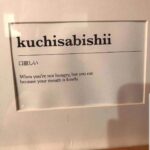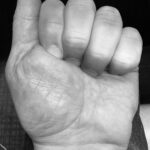My exercises are not helping. My back pain is worse. Dr. Lou’s Mini Blog
The exercises I was given and that I’m doing, aren’t working for my back pain. In this quick installment of Dr. Lou’s Mini Blog, one thing needs to be highlighted. When a provider gives you specific exercises for your problem, based their knowledge and experience of your problem and what helps, do what they tell you. Don’t add your own exercises, don’t modify the prescribed exercises, don’t lie about doing them. Do them as prescribed without any changes unless you discuss those changes with your provider and they sign off on the changes. In over 23 years of working with patients on a variety of nerve, brain, muscle, joint, and other types of issues, including back pain, I have made a horrifying discovery. Many people who say they are doing their exercises are not. Many of these patients have created their own protocols that are wrong. Often times, the exercises the provider has prescribed are being done wrong. Patients often don’t do the physiotherapy component as often as they were told to. IF you do the exercises wrong, in the wrong amount, or do something different “in place” of those prescribed, you may not get better. Different exercises do different...
read moreLow Back Pain and Body Weight – The Secret Relationship
What Role Does Body Weight Play In Low Back Pain & Healing? Body weight plays a significant role in the chronicity of low back pain. Multiple studies and reviews consistently show that higher body weight-especially overweight and obesity-increases both the risk of developing chronic low back pain and the likelihood that pain will persist over time 1 2 3 7. Increased Risk and Prevalence: Obesity and overweight are established risk factors for chronic low back pain. For example, being obese can increase the odds of chronic low back pain by up to 1.7 times compared to those with normal weight1. The prevalence of low back pain rises with increasing BMI: less than 3% of people with normal BMI reported low back pain in the past three months, compared to 7.7% of obese and 11.6% of morbidly obese individuals 2. Dose-Response Relationship: There is a linear relationship between BMI and chronic pain rates. Overweight individuals have a 20% higher rate of recurring pain, while those with class I, II, and morbid obesity have 68%, 136%, and 254% higher rates, respectively, compared to normal-weight individuals 2. Mechanical and Structural Impact: Excess body weight increases the mechanical load on the spine, leading...
read moreWhy does low back pain sometimes take so long to heal? Patience. Knowledge. Action. Back Pain in Portland, Maine
Top 25 Variables That Contribute to Slow Healing of Low Back Pain It is very common to feel like your healing process is going way too slow. The frustration is understandable, but so is keeping a level head, objectivity and reasonable expectations. Without maintaining these, we set ourselves up for frustration, disappointment, selling ourselves short, and streamlining drugs and surgery. Patience and a clear head lead to identifying “perpetuation factors” of what we are suffering with, which prompts change in daily life if we are conscious enough to see what we are doing and acknowledge the need for change. If you are going to be frustrated, discouraged, disappointed, do it after you have done everything right. A wide range of factors can contribute to the slow healing of low back pain, influencing the risk of pain becoming chronic and recovery being delayed. These factors span physical, psychological, social, and lifestyle domains. Based on the evidence from systematic reviews and authoritative sources, the following are the top 25 variables most commonly associated with slower healing in low back pain. Use this as a partial checklist for your own contributing factors to slow healing, then assess, and make changes to that...
read moreGuyon’s Canal Syndrome – Ulnar Nerve Entrapment – Wrist Pain in Maine.
What is it? The ulnar nerve is the nerve you smack when you hit your funny bone. It goes to your pinky and ring finger and controls that part of your hand. In the wrist there is a little tunnel of ligament that the ulnar nerve passes under. Like carpal tunnel syndrome, the nerve gets pressed and causes pain and dysfunction in the areas that the ulnar nerve controls. Repetitive motions, pressure from your bike handlebars, position of hands while sleeping, motorcycle handlebars, heavy gripping, prolonged keyboard use, vibrating power tool use and things like that lead to this syndrome, which if left to get better, but it doesn’t, can cause serious problems in your wrist and hand. If you break your wrist, dislocate it, or smash the area really hard, it may create the problem or make it much worse. Sometimes arthritis, even tumors can cause this condition. Less commonly, problems in the artery that follows the ulnar nerve can lead to problems. How do you fix it? Change your activities or modify them. Avoid repetitive motions or pressure in your wrists. This may mean changing your handle bar grips, or using a mouse or keyboard pad. Ice...
read moreAfter-Hours: Medical Access in Portland, Maine.
What do you feel is missing? Should your doctor be available after-hours? Having been in healthcare education system and in active practice for almost 30 years, people say the most interesting things. Most patients we encounter have stories of disappointment related to their healthcare providers and the American healthcare system on the whole. One of the things that frustrates me the most about healthcare in the USA is private insurance premiums and lack of access to our doctors when we need them most. The biggest complaint of the system on the whole among our patients is the price, private insurance denials and unfairness, and the fact that it takes too long to see the doctor. Once you see the doctor, they disappear until the next visit. The United States is the only first world nation without universal healthcare, and we are ranked last among first world nations for quality of care. Their universal healthcare doesn’t make them a socialist country, but instead relieves the stress of worrying about healthcare and medical bill bankruptcy that is the leading cause of bankruptcy in the USA. Don’t be fooled, the doctors in other countries learn the same science and get the same training in...
read more




